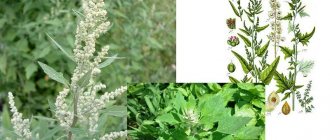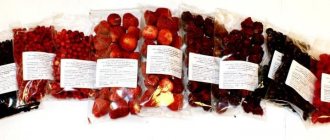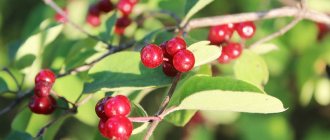Ten healthy Siberian autumn berries
Raspberries, strawberries, wild strawberries and cherries adorn the shelves of thrifty owners in the form of jams, compotes and preserves. But the berry picking season didn't end there.
The time has come for the ripening of wild fruits and berries, which in many respects of nutritional value, vitamin content and medicinal properties are superior to garden ones. Read about the properties of autumn berries and the peculiarities of harvesting in the material from the Forest Pantry. Remember that before consuming medicinal herbs and berries, you should consult a doctor.
Elder
Today, elderberry fruits are recommended to treat diabetes. Juice from fresh fruits, as well as tea from dried ones, have a mild laxative effect; Mashed potatoes and jelly are a good dietary remedy for gastrointestinal diseases. Black elderberry, along with red elderberry, is often grown in gardens as an ornamental plant or hedge. Small plantings are of industrial importance. Fresh elderberry fruits are contraindicated for oral use, but dried elderberries are used for making berry jelly, juices, syrups, purees, and confectionery.
Kalina
Viburnum is a plant with a wide range of medicinal effects on the body, along with such medicinal plants as St. John's wort, rose hips, garlic, astragalus, etc. After the first frost, the berries lose their bitter taste and become pleasant to the taste. They are used in cooking as a seasoning for meat dishes, as a filling for pies, to make jelly, juices, liqueurs and tinctures, and vinegar. The seeds can serve as a substitute for coffee. The berries are picked in dry weather after the first frost, picking them off along with the stems to avoid damage. Dry in the shade in a suspended state with good air ventilation. Drying using dryers, stoves, and ovens gives good results. To do this, the berries are first slightly dried and then dried at a temperature not exceeding 60°C. Dried fruits are separated from the stalks and stored in cotton, linen or paper bags or boxes. Shelf life – 2 years.
Rose hip
Cinnamon rose hips are the champion among fruit and berry plants in terms of variety and quantity of vitamins. It contains the maximum amount of vitamins P and C (10-18%) valuable for the body. It contains 10 times more ascorbic acid (vitamin C) than black currants, 50 times more than lemons and 100 times more than apples. One to three rose hips can provide an adult’s daily requirement for this vitamin. Rosehips are harvested when they acquire the characteristic color of the species, but are slightly unripe. In this form it is easier to collect them without fear of crushing them with your fingers. Rosehip leaves that fall on the fruit are not thrown away, but are used for brewing. The collection must be completed before frost, since in this case, when dried, the fruits lose most of their vitamins. Fresh berries can be stored for up to 3-4 days. Dry the raw materials by spreading them in a thin layer in a well-ventilated area, remembering to stir them periodically. You can use a gas oven for these purposes, drying at a temperature not exceeding 40°C. Shelf life – 2 years. This is the best way to preserve rose hips for the winter.
Sea buckthorn
Sea buckthorn fruits are used as an antiscorbutic, analgesic, and for gastrointestinal diseases. The fruits, brewed with the leaves, are used for gout and rheumatism. A decoction of fruits and branches is used against hair loss. A decoction of the seeds is considered a good laxative. For women, sea buckthorn fruit juice is an excellent cosmetic product. Sea buckthorn oil is the best remedy for treating skin diseases. It is indispensable in the treatment of burns and trophic ulcers. For neurodermatitis, scaly lichen and other chronic dermatoses, sea buckthorn oil leads to a rapid cessation of peeling, epithelization of cracks and the disappearance of itching. At home, you can use a special device for collection. Take ordinary large tweezers and tie a strong nylon thread or fishing line to the ends—a plastic hook is formed. The hook is drawn from the base of the fruiting branch to its end, tearing off the fruits first from the sides, and then from the top and bottom sides of the shoot. A canopy is first spread under the branch being processed, onto which the picked fruits fall.
Rowan
Fresh and dried fruits are used as a therapeutic and prophylactic agent for vitamin deficiency, diseases of the liver, gall bladder, kidney stones, hemorrhoids, rheumatism, as a hemostatic and antiscorbutic agent. The fruits are harvested at the consumer stage of maturity from September to October. The scutes with ripened fruits are collected by hand or cut off. The fruits are cleaned of branches, stalks, and defective specimens. If they are intended for drying, then after sorting they are dried in the sun for 2...3 days. To prepare fruit and berry confectionery, you should use rowan collected after frost, as it is sweeter and less bitter.
Cranberry
Cranberries have a number of beneficial properties. It has an antiseptic and tonic effect. Cranberry has an antipyretic effect. In addition, it improves the functioning of the gastrointestinal tract and enhances the effect of various antibiotics. Cranberries are the most actively used as medicinal raw materials. They are collected in September, during ripening. During this period, the berries remain unripe and quite hard. The fruits ripen during storage. At the same time they become softer. You can store cranberries in different ways. Firstly, it is filled with cold water. It does not dry out or deteriorate in water and can be stored for a very long time in a cool place. The water is changed every two weeks. The drained liquid can be used to make teas and other drinks. Secondly, cranberries do not lose their properties after freezing. Berries can be frozen and stored at sub-zero temperatures.
Barberry
Medicinal infusions and decoctions are used for diseases of the urinary tract, colitis, as a diaphoretic for colds, and as an astringent for diarrhea. Barberry fruits are included in medicinal preparations used for liver disease. The bark and fruits are used for diabetes. Dried leaves, roots and bark are used to prepare infusions and tinctures. Infusions have antipyretic and antimicrobial effects, help against jaundice, and are used as a mouth rinse for gum inflammation. Tinctures have a hemostatic effect and lower blood pressure. Due to their high acidity, barberry berries quench thirst well and stimulate appetite. At home, they are used to make juices, drinks, and boiled spicy seasonings for meat and fish dishes. The simplest ways to process berries at home are drying them, as well as sprinkling them with granulated sugar and then storing them in the refrigerator.
Cowberry
Lingonberries contain a huge amount of minerals and vitamins necessary for human health. No wonder it is included in the register of medicinal plants. Lingonberries have a general strengthening effect on the entire human body. They are used as an independent medicine for constipation, vitamin deficiency and congestion of the gallbladder. Products prepared on their basis have antiseptic, bactericidal, and anthelmintic properties. Freshly squeezed juice is good to drink for people suffering from neuroses, anemia and poor eyesight. It destroys putrefactive and other dangerous bacteria living in the intestinal tract. An important warning is the ability of lingonberry leaves to accumulate radiation. Therefore, it is worth paying attention to the packaging indicating that the radiation background complies with the norm. When collecting a medicinal plant, do it only in environmentally friendly places. People have different ways of preparing lingonberries for the winter. Its fruits are frozen and jam, compote, preserves, and fruit drinks are prepared from them.
Hawthorn
It has vasodilating and antispasmodic effects. Hawthorn normalizes vascular tone and improves blood supply to all organs, this is especially important for the brain and heart. The permeability of the walls of blood vessels decreases, the cholesterol level in the blood decreases, and the sugar level normalizes. Hawthorn preparations can prevent neurological diseases, alleviate their course and cure them. They can improve brain function and memory. All these beneficial properties are actively used in the treatment of a number of diseases. Hawthorn fruits are harvested when they are fully ripe. Dry in natural conditions, if the weather permits, since complete drying requires heat. If there are no conditions, then you can use an oven or a special dryer, which heat up to fifty degrees.
Chokeberry (chokeberry)
In terms of the amount of substances it contains useful for the human body, chokeberry is not inferior to red mountain ash, and even surpasses it in taste.
Chokeberry berries and leaves are used in folk medicine to normalize intestinal function and lower blood cholesterol levels; removal of certain radioactive substances and heavy metals from the human body; improves liver function and as an excellent choleretic agent; increasing immunity; normalization of blood pressure.
In order for chokeberry berries to last as long as possible, they must be completely dry. Therefore, chokeberry should be harvested only during the day, when the dew has already subsided, and only in dry weather.
Chokeberry is harvested in a certain way - without picking the fruits from the cluster. That is, they do not pick each berry individually, but cut off the whole bunch at the base. The bunches of berries are laid out in a single layer in cardboard or wooden boxes and stored in a cool room or hung on a pre-stretched rope.
Photo: pixabay
Blueberry
Low shrub, up to half a meter tall. Wild specimens are found in nature, but for home cultivation it is better to purchase a cultivated variety. When choosing a variety, you need to decide on what qualities you want to focus on: the concentration of sugars in the fiber of the berries, yield or resistance to frost.
Garden specimens grow up to 2.5 m, so you need to give these blueberries enough space in the garden. During the season, you can collect up to 10 kg of berries from a bush. They are valued not only by ordinary people, but also by nutritionists and cosmetologists, because this northern berry accumulates huge reserves of antioxidants.
Related article:
Spring treat for strawberries
Cloudberry
In the tundra and swampy areas you can find cloudberries, which in the northern regions the local population calls “swamp amber” for its bright orange color. Outwardly, it looks like a raspberry. While it is unripe, the color is red, and only after ripening it turns yellow.
It is almost impossible to grow this subshrub in the garden, since cottages and houses are rarely set up in swampy areas. In order to collect it, you need to go into the wild.
Related article:
Growing mulberries in the garden
Cranberry
A berry that is much easier to grow in a northern garden than in a southern one is cranberry. This is an evergreen creeping shrub. To develop, it needs marshy places or simply areas with a good supply of moisture. The plant is often planted where another representative of the fauna cannot grow.
Related article:
Treating currants against bud mites
Cranberries ripen very late - in October. In the northern regions it is already quite cold at this time, so frost can make the fiber soft. For storage, the crop must be harvested before sub-zero temperatures hit. After freezing in the freezer, such cranberries will be no less sweet than those ripened on the bushes.











